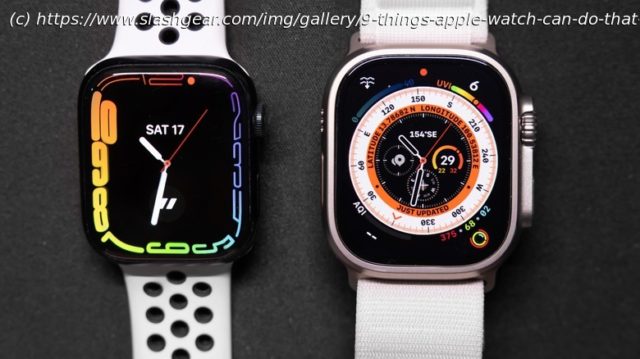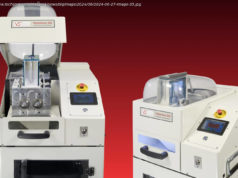The Apple Watch continues to dominate the market, and Samsung’s Galaxy Watch can’t seem to keep up — here are a few areas where Apple’s wearable excels.
Smartwatches have swiftly occupied their spot among „staple gadgets“ in our lives, providing easy access to essential information right on the wrist. Apple and Samsung are the world’s leading smartwatch makers, and their innovations are bringing us unparalleled convenience and improved fitness. The Samsung Galaxy Watches have handy features that aren’t on the Apple Watch, like a Bioelectrical Impedance Analysis sensor to measure the body fat percentage, skeletal muscle, and bone mass.
But Apple has long held the majority share in the smartwatch market, and that’s because they’ve consistently covered all their bases — whether it’s seamless phone integration or an extensive collection of apps, or their valuable health and fitness features. Naturally, this means there are things the Apple Watch can do that the Samsung Galaxy Watch can’t. Something the Apple Watch will do is lighten your wallet, but let’s look at nine other differences between them, including size, GPS, durability, and safety features.1. Display everything larger and brighter
The Apple Watch models are all larger than their equivalent Samsung Galaxy Watch models. While the Galaxy Watch 5 is available in 40mm and 44mm sizes, the Galaxy Watch Pro has a single 45mm size.
The Apple Watch 8 has two sizes — 41mm and 45mm, and the Apple Watch Ultra’s the largest at 49mm. How do you figure out which size is right for you? If you want larger text, more screen space to view information, and extended battery life, then the larger variants are for you. Although the 41mm and 45mm sizes have all-day battery life (18 hours), the former’s 282 mAh battery will give you a few hours less compared to the latter’s 308 mAh. The Ultra has a considerably larger 542 mAh battery that can last 36 hours or more.
You’ll also want to consider your wrist size. Apple recommends the 41mm model for wrist sizes between 130 to 200mm and the 45mm watch for 140 to 220mm. The Ultra has three strap sizes: small for 130 to 160mm wrists, medium for 145 to 190mm wrists, and large for 165 to 210mm wrists. But ultimately, your ideal size comes down to your preferences.
Another area where the Apple Watch overtakes the Galaxy Watch is the display brightness. With 2000 nits brightness, the Apple Watch Ultra literally outshines the Galaxy Watch’s 1000 nits — perfect for outdoor enthusiasts.2. Navigate smoothly with the Digital Crown
The older Galaxy Watches had a physical rotating bezel for scrolling, app-switching, and other functions. But Samsung has replaced the rotating bezel with a digital or touch bezel on the Galaxy Watch 5, much to the dismay of fans. The touch bezel doesn’t move physically and works by running a finger along the edges of the screen, naturally lacking a physical bezel’s precision and tactile feel. And it certainly doesn’t make navigation as convenient as the Apple Watch’s Digital Crown.
The rotating Digital Crown is iconic for its ultra-smooth, satisfying, and intuitive navigation experience. At the Apple September Event in 2014, Tim Cook discussed Apple’s powerful user interface innovations over the decades, like the iPod’s click-wheel or the iPhone’s multi-touch, before revealing the Apple Watch and its Digital Crown.
The Crown has come a long way since then and boasts versatile functionality: rotation, holding, single-press, double-press, triple-press, and long-press make interaction a breeze. You also have continuous haptic feedback when rotating the Crown, ensuring a deeply tactile experience that makes you want to rely on the Crown over using touch wherever possible.3. Navigate more precisely with L5 GPS
The Samsung Galaxy Watch 5 and Pro have the same GPS specs as the Galaxy Watch 4: GPS, GLONASS, Galileo, and BDS (BeiDou). The Apple Watch Ultra features L1 and L5 GPS, GLONASS, Galileo, QZSS, and BeiDou. To understand the difference, let’s look at what these systems are.
GPS, which is Global Positioning System, is the U.S. government’s satellite-based navigation system with 31 satellites in its roster. GLONASS is Russia’s satellite navigation system with 22 satellites, Galileo’s the EU’s navigation system with 24 satellites, QZSS is Japan’s satellite system with 5 satellites, and BeiDou or BDS is China’s with 35 satellites.






